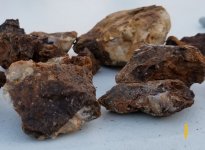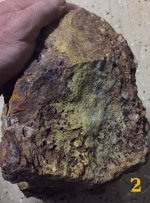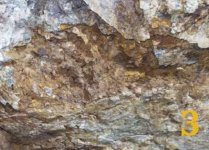SaltwaterServr
Sr. Member
Below I've given you three different ores from which the values have been determined by triple replicate assay by an umpire assayer.
Their grades are:
0.143 Au 0.12 Ag
2.4 Au 1.3 Ag
5.7 Au 1.7 Ag
Now here's the challenge, which one of those photos corresponds with which assay result? Mark your choice in the poll and I'll post the correct answer on Friday night.

 .
.

Their grades are:
0.143 Au 0.12 Ag
2.4 Au 1.3 Ag
5.7 Au 1.7 Ag
Now here's the challenge, which one of those photos corresponds with which assay result? Mark your choice in the poll and I'll post the correct answer on Friday night.

 .
.
Last edited:
Upvote
0



 lol.
lol.


